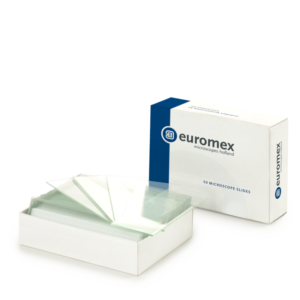Optical spectrometers or spectroscopes are used to look at the...
What we offer
Browse our wide selection of products, backed by our exceptional service
- Products
- Consumables
- Instrument
- Low Speed Centrifuge
- Low Speed Refrigerated Centrifuge
- High Speed Centrifuge
- High Speed Refrigerated Centrifuge
- Cytology Centrifuge
- Floor Standing Centrifuge
- Mini Centrifuge
- Incubator Shaker
- Microwave Digestion
- Laboratory Mill
- Microplate Readers
- Ultrasonic Cleaners
- Mixer,Shakers
- Day Bath Incubator
- Dry Bath
- Microscopes
- UV Visible Spectrophotometer

Micro slides and cover glass
Microscope slides are essential and are the platform for your samples. Our microscope slides provide the clearest possible optics, enabling you to reach an accurate diagnosis. The reduction of impurities in our glass, including metallic contaminants in common float glass, reduces fluorescence and provides a consistent platform for your samples
Product Detail
Microscope slides are essential and are the platform for your samples. Our microscope slides provide the clearest possible optics, enabling you to reach an accurate diagnosis. The reduction of impurities in our glass, including metallic contaminants in common float glass, reduces fluorescence and provides a consistent platform for your samples
White glass microscope slides are all you need to prepare your own specimens from bacteria to protists to plants
Microscope slides are often used together with a cover slip or cover glass, a smaller and thinner sheet of glass that is placed over the specimen
Highlights
- To prepare your own specimens
- Essential for your samples
- Slides are often used with a cover glass
- Different models available
Microscope Slides
MICROSCOPE SLIDES
A microscope slide is a thin flat piece of glass, typically 76 x 26 mm (3 by 1 inches) and about 1 mm thick, used to hold objects for examination under a microscope. Typically the object is placed or secured (mounted) on the slide, and then both are inserted together in the microscope for viewing. This arrangement allows several slide-mounted objects to be quickly inserted and removed from the microscope, labeled, transported, and stored in appropriate slide cases or folders.
Microscope slides are often used together with a cover slip or cover glass, a smaller and thinner sheet of glass that is placed over the specimen
NUMBER OF SLIDES
50 or 100 pieces (per pack)
MATERIAL
(Half) white glass. With cut, grinded or concavity grinded edges
DIMENSIONS (wd)
76 x 26 mm
–––––––––––––––––––––––––––––––––––––––––––––––––––––––––
Microscope Cover glass
A cover slip, coverslip or cover glass is a thin flat piece of transparent glass and a fraction of a millimetre thick, that is placed over objects for viewing with a microscope. The object is usually held between the cover slip and a somewhat thicker microscope slide, which rests on the microscope’s stage or slide holder and provides the physical support for the object and slip.
The main function of the cover slip is to keep solid specimens pressed flat, and liquid samples shaped into a flat layer of even thickness. This is necessary because high-resolution microscopes have a very narrow region within which they focus.
The cover glass often has several other functions. It holds the specimen in place (either by the weight of the cover slip or, in the case of a wet mount, by surface tension) and protects the specimen from dust and accidental contact. It protects the microscope’s objective lens from contacting the specimen and vice-versa; in oil immersion microscopy or water immersion microscopy the cover slip prevents contact between the immersion liquid and the specimen. The cover slip can be glued to the slide so as to seal off the specimen, retarding dehydration and oxidation of the specimen. Microbial and cell cultures can be grown directly on the cover slip before it is placed on the slide, and specimens may be permanently mounted on the slip instead of on the slide.
SEALING
The cover slip is often glued to the microscope slide, in order to seal off the specimen from contamination and decay. A number of sealants are in use, including commercial sealants, laboratory preparations, or even regular clear nail polish, depending on the sample. A solvent-free sealant that can be used for live cell samples is “valap”, a mixture of vaseline, lanolin and paraffin in equal parts
NUMBER OF SLIDES
100 pieces (per pack)
MATERIAL
White glass
DIMENSIONS (wd)
18 x 18 mm, 22 x 22 mm or Ø 18 mm
THICKNESS
0.13 – 0.17 mm
Related Recommendations
Gemological refractometer
Gemology or gemmology is the science dealing with natural and...






